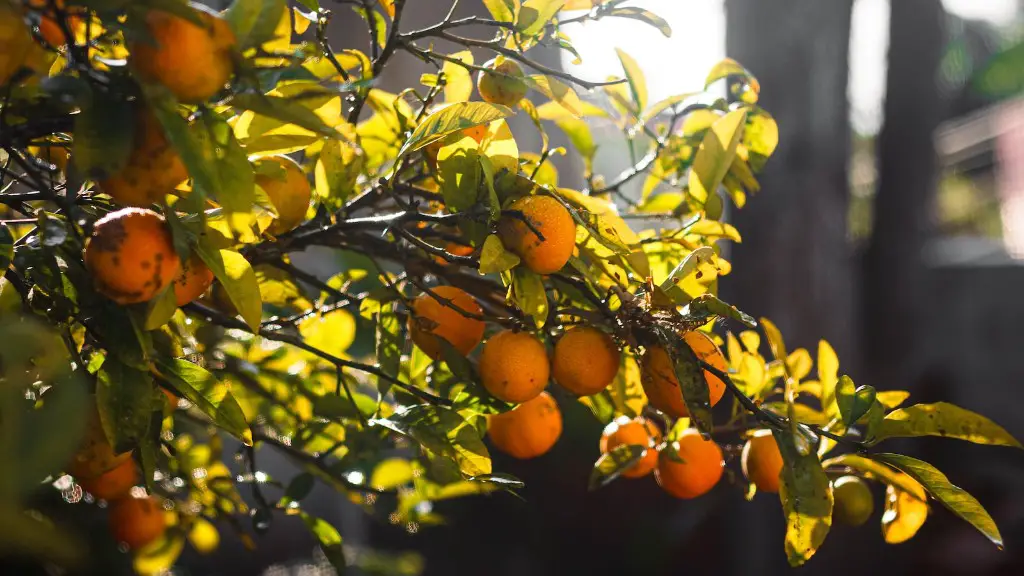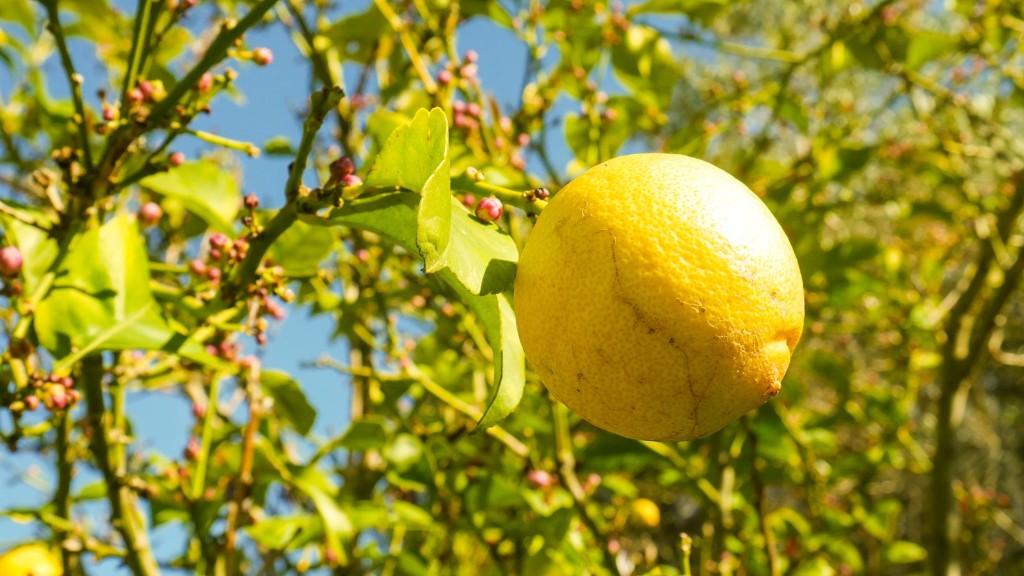Meyer lemon trees are a great addition to any home or garden – however, it is important to care for them properly to ensure a healthy and productive tree. In this article, we’ll look at some key tips for caring for your improved Meyer lemon tree.
Firstly, give your tree enough sunlight. Meyer lemon trees prefer direct sunlight for a minimum of 6 hours a day – if your tree is not getting enough sunlight, it will become weak and produce fewer fruits. It’s also important to place your tree in a well-drained area to avoid root rot.
Next, it is essential to water your tree correctly. Water deeply once a week, saturating the soil around the base of the tree. Avoid over-watering which can lead to root rot and other problems. Also, fertilize your tree once in spring and once in early summer with a balanced fertilizer.
Thirdly, make sure to prune your tree periodically. Pruning is important to encourage better growth and allow more light to reach the inner branches. Your tree should be pruned once or twice a year, during the growing season from late spring until early autumn.
Fourthly, monitor for pests and diseases. Meyer lemon trees are susceptible to pests and diseases, so it’s important to keep an eye out for signs of an infestation. Be sure to check your trees regularly and treat any infestations as soon as possible.
Fifthly, provide adequate protection from cold temperatures. Meyer lemon trees do not tolerate cold very well, so it is important to provide some protection from extreme temperatures during winter. Mulching the soil around your tree will help retain warmth and provide insulation.
Finally, it is important to give your tree enough space. Meyer lemon trees love lots of room to grow and thrive. Make sure you give your tree at least 8-10 ft of space around it – this will help ensure that your tree gets the necessary amount of sunlight and air circulation.
Pruning for Improved Meyer Lemon Tree
Pruning is an essential part of proper care for improved Meyer lemon tree. It helps improve yields, stimulates new growth and increases sunlight availability to the plant. For best results, it is recommended that you prune your improved Meyer lemon tree regularly as this will help maintain a healthy tree structure. When pruning your lemon tree, it is important to select the right tools and technique. Pruning can be done using shears, when pruning small branches, or using a saw for larger branches. Make sure to remove any weak or dead branches, as well as any diseased or pest-infested growth. Also, make sure you don’t prune off more than one third of the tree’s foliage as this will significantly weaken it.
Soil Preparation for Improved Meyer Lemon Tree
Having the right soil is essential for improved Meyer lemon tree growth and productivity. To prepare the soil for planting your tree, it is important to add a layer of organic matter such as compost or aged manure, to the planting site. This will help improve the soil’s fertility and drainage. Additionally, if the soil is too heavy, it is a good idea to add some coarse sand to the soil. After planting the tree, it is important to water the soil well and add a thick layer of mulch around the base of the tree to retain moisture and reduce the rate of evaporation.
Fertilization and Watering of Improved Meyer Lemon Tree
Fertilization and watering are two of the most important aspects of proper care for improved Meyer lemon tree. In terms of fertilization, it is important to use a balanced fertilizer with an equal ratio of nitrogen, phosphorus and potassium. Additionally, applying fertilizer regularly throughout the tree’s growing season is important to ensure the tree has all the nutrients it needs. As for watering, it is important to ensure that your lemon tree is getting enough water, but not too much. When watering your tree, it is important to water deeply, to a depth of at least 8-10 inches and water regularly, but allow the soil to dry out between waterings.
Protection from Pests and Diseases
Meyer lemon trees are particularly susceptible to pests and diseases. These can cause significant damage to your lemon tree and decrease its productivity. To ensure your tree is protected from pests and diseases, it is important to monitor your tree regularly for signs of infestation. Common signs of pest infestations include leaves with holes or discolourations, and sticky or discolored fruits. If you notice any of these signs, it is important to take immediate action to prevent further damage. Additionally, it is important to prune away any damaged or dead branches, as well as trim away any new growth, as this will prevent pests and diseases from spreading.
Harvesting Improved Meyer Lemon Fruit
Harvesting improved Meyer lemon can be done when the fruits are ripe. To find out when your Meyer lemons are ripe, simply squeeze the fruit – if it feels firm and juicy, then it’s ready for picking. Once ripe, you can harvest the fruit by cutting it off the tree. You can use either scissors or shears, but make sure you wear gloves, as the citrus oils can irritate your skin. After harvesting, store the lemons in a cool and dry place to ensure their freshness.

